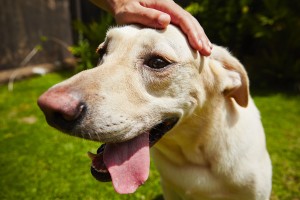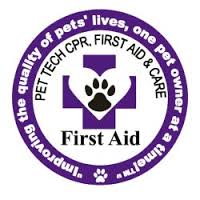 Warmer weather means humans take precautions when exercising, such as bringing a water bottle, putting on a hat and dressing lighter. Why not extend the same courtesy to your pooch? Yes, your favorite furry baby is panting like crazy because he is a HOT DOG!
Warmer weather means humans take precautions when exercising, such as bringing a water bottle, putting on a hat and dressing lighter. Why not extend the same courtesy to your pooch? Yes, your favorite furry baby is panting like crazy because he is a HOT DOG!
Overheated dogs can suffer heat exhaustion, leading up to heat stroke. After your walk, keep an eye out for the following possible signs of heat exhaustion:
Panting, followed by disorientation and fast, noisy breathing could signal overheating; staggering, collapsing or convulsing, bloodshot eyes, bright red or blue gums, vomiting and diarrhea, unconsciousness.
If you have a hunting dog (hound, jack russel, etc), they are unlikely to stop hunting or retrieving even when they become dangerously hot! You should watch him dog closely for overheating signs. Yes, your pooch will literally collapse before he will stop the chase! Make sure to take frequent breaks and submerge him in cool water, such as a river, lake, pond or even splash his underbelly from your water bottle. Ideally, let your dog fully submerge his body in the cold water.
If you live in a neighborhood, don’t leave your dog outside all day once the temperature gets above 85 degrees -even if you have a fenced yard and shade! After a walk or run, observe your dog carefully. If he appears to be in distress, concentrate cool (not cold) water on his head, neck and in the areas underneath the front and back legs. Yes, dogs cool from the bottom up so focus on teh paws first! Put a fan on him if you have one and a bowl of cool water nearby. Short potty breaks are ok, but avoid the outdoors or anymore exercise for the rest of the day
North Carolina is known for sun and heat starting in June. Leaving a dog outside in this heat after exercise can lead to heatstroke and it can escalate in a matter of just minutes! What does this mean? “Cells of the body rapidly start to die. The brain swells, causing seizures. Lack of blood supply to the GI tract causes ulcers. Dehydration leads to irreversible kidney damage.”-AKC. Apply cool cloths to your dog as you call the closest vet. Explain the symptoms so they can be prepared to meet you with an IV of fluids if necessary. They may also apply alcohol to the ears, foot pads and groin to safely lower the temperature. In extreme cases of overheating, your dog may need a breathing tube and artificial ventilation.
Here are some Summer Walk Solutions to decrease the likelihood of heatstroke.:
1. Start your stroll before the sun comes up early in the morning
2. Carry a water bottle and collapsable dish for your dog
3. Take frequent breaks, preferably in the shade
4. With older dogs, shorten the walk and avoid hot pavement
On days when it is in the high 90’s, simply avoid outside runs/walks and provide a kiddie pool or sprinkler play for your dog instead!










